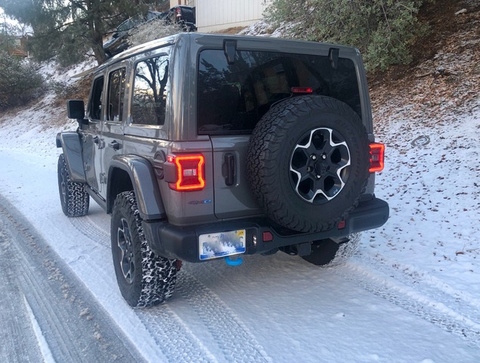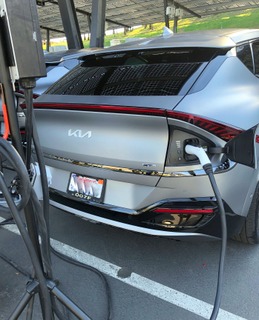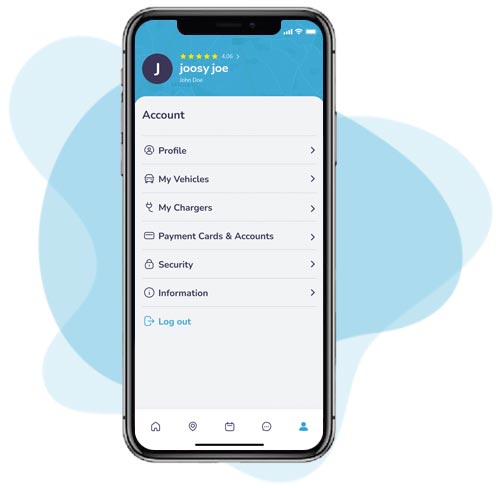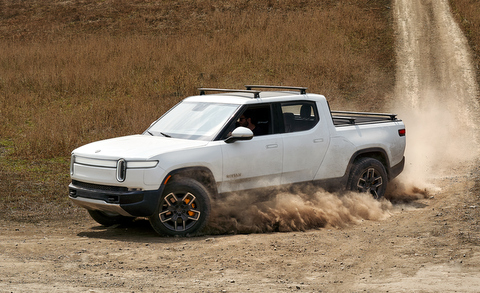Tips To Deal with the Challenges of Rural Charging
The question of whether you should buy an EV instead of a traditional ICE car is a very hot topic. Government agencies at various levels are proposing incentives to increase uptake of EVs while also instituting restrictions for ICE vehicles, such as zero-emission zones.
Most Americans are aware that President Biden wants the purchase of gas-powered vehicles banned by 2035. So, if you’re going to buy a brand new vehicle at that point, you’ll have no option but to buy an electric car if Congress puts the ban into legislation. Several states have already moved on that front, even if federal rules are not passed.

One of the main talking points people discuss is they worry about not being able to find a place to charge their EV, especially if they live in rural areas.
In this article, we take a deep dive into ways you can overcome this issue, especially if you live in the more rural communities of America.
Install a Home Charger
There’s no debating that most EV owners charge their vehicles at home. Surely the best way to own an EV is to install a wall-mounted charger at one’s residence in order to charge the EV overnight, and wake up to a full battery in the morning.
This is even more important if you do not live or work in a city where public charges are far more widely available. Out in the country, it’s a little different!
The federal government in conjunction with energy companies is working hard to increase the charging infrastructure, but are folks in rural spots being overlooked?
Having the convenience of a home charger is definitely the most ideal option. Moreover, rural drivers are more likely to live in homes where they can park their car, as multi-unit dwellings are not so common in rural spots. Consequently, home charging is simplified significantly in such areas.
Purchase a Long Range EV
Driving an EV in rural areas has its disadvantages.
Primarily, such areas will often not offer such a smooth driving experience, so mountains, hills and poorly surfaced roads will drain the EV’s range considerably.

Additionally, there’s also the issue of colder weather in more exposed areas. An EV might offer around just 80% of the official claimed range if weather conditions are very cold. Also, it takes longer to charge an EV in colder temperatures.
That said, while some argue that range limits might make EVs an unattractive option for rural drivers, it’s worth noting that newer EV models pride themselves on having much longer ranges than one might think. Indeed, most EV models being launched in recent months can offer very long ranges, making it still reasonable for one to drive an EV out in the country.
On just one full charge, many EVs are capable of a range of around 300 miles. The key is to invest in an electric car that can offer such a range.
Additionally, many newer AWD EV’s can handle going off-road. In case of rough terrain, the suspension on some models can be adjusted to suit.
The most important thing is to make sure that the car has been fully charged before tackling rather rough terrains, such as snow, sand or mud.
Charger Sharing Apps
Nowadays community charging via charger sharing apps is helping a great deal to alleviate anxiety associated with battery depletion. Thanks to these apps, you’ll be able to find a lot more places where a charge point is available for use.

Naturally, when it comes to rural areas, the accessibility of public charging points is not going to be as plentiful as one will expect from an urbanized zone. Some companies that offer off-road capable vehicles, like Jeep and Rivian, are championing the development of more rural public charging.
However, there should still be plenty of charge points that one can take advantage of within close proximity to rural areas as more EV drivers sign up to these services and share their charge points in the future.
When motorists start to recognize the mutual benefits of sharing their chargers, more and more people will start to do it.
Tax Incentives
The tax incentives being offered by the government are helping a lot in boosting the sale of EVs. With a federal income tax credit of up to $7,500 available for some EV buyers, one might stop to consider this huge financial incentive. State and local entities also have incentives as do some utilities and private companies.
These incentives are making it more feasible to finance the considerably higher priced electric cars, leading to more EV uptake. The upfront cost of buying an EV is greatly lessened thanks to these tax rebates.
It’s also worth mentioning that over time there’ll also be savings on fuel and maintenance costs, with both surging for traditional gas vehicle owners.
Don’t Resist Change
One of the main scenarios associated with any kind of shift away from considered norms is that people are inherently resistant to change or are hesitant to do so. Among fears and concerns, electric cars are making many people worry whether they will be able to make a good choice or not.
One thing is for sure though–over time we’ll all have to switch to electric sooner or later, so the best option is to avoid resisting change until the very last minute and instead, aim to accept it.

One good way to do this is to learn more about electric vehicles, their ranges, the advancements that have been made in this field, as well as the various positive aspects that one can benefit from when purchasing an electric vehicle.
Ultimately, we all need to be a part of the grand evolution towards a pollution free world.
And the sooner we start, the better.
Conclusion
While driving an electric vehicle in rural areas is seemingly a lot more challenging than in an urbanized zone, there’s really no reason to fear driving one.
Longer range EVs, improved technologies and investing in a home charger are just some ways to make the shift a more palatable option.
The federal government is also going out of its way to offer sizable income tax rebates, as well as investing in improved charging infrastructure and implementing policies that will lead to improved electrified transportation.
Big changes are on the horizon. And so it’s how you deal with those changes and how quickly that will invariably determine how well you prosper.

cheap lasuna pill – cheap himcolin pill buy himcolin tablets
brand neurontin 600mg – buy motrin 400mg online cheap order sulfasalazine 500mg pills
purchase besivance sale – buy carbocysteine generic sildamax pills
buy probenecid medication – buy monograph 600mg for sale order generic tegretol 200mg
celebrex 100mg over the counter – buy generic indomethacin cheap indomethacin 75mg
order mebeverine 135 mg sale – how to buy cilostazol buy cilostazol without a prescription
voltaren online – order aspirin 75mg sale buy generic aspirin for sale
purchase rumalaya online cheap – order amitriptyline 10mg without prescription amitriptyline 50mg ca
order generic pyridostigmine 60mg – order imitrex 25mg online cost azathioprine 50mg
lioresal pills – buy baclofen buy feldene 20 mg generic
buy voveran without a prescription – voveran buy online order nimodipine without prescription
buy periactin 4mg pill – buy zanaflex pill buy tizanidine online cheap
buy meloxicam 7.5mg without prescription – buy meloxicam online cheap where to buy toradol without a prescription
cefdinir online order – clindamycin for sale cleocin online buy
trihexyphenidyl oral – how to purchase emulgel where can i buy voltaren gel
isotretinoin generic – brand isotretinoin 40mg deltasone 5mg cost
prednisone 40mg us – elimite order online order elimite cream
permethrin order online – order benzac sale buy generic retin for sale
betamethasone 20gm drug – buy benoquin cream for sale monobenzone sale
metronidazole 400mg ca – how to buy flagyl order cenforce 50mg without prescription
order augmentin 1000mg generic – augmentin sale cheap levoxyl pills
buy hyzaar medication – generic cephalexin 125mg buy keflex pills
clindamycin ca – indocin 75mg ca indocin generic
buy generic eurax online – order aczone gel buy aczone without prescription
provigil us – meloset 3mg brand buy melatonin 3mg without prescription
bupropion 150mg for sale – order zyban 150 mg pills buy shuddha guggulu
buy xeloda for sale – order ponstel online danazol buy online
buy progesterone 200mg sale – buy clomiphene purchase fertomid for sale
cheap fosamax – purchase alendronate generic medroxyprogesterone online order
norethindrone pill – yasmin pills buy yasmin tablets
how to buy estrace – femara 2.5 mg generic arimidex 1 mg cheap
cabergoline where to buy – dostinex tablet purchase alesse for sale
гѓ—гѓ¬гѓ‰гѓ‹гѓійЊ 5mg еј·гЃ• – гѓ—гѓ¬гѓ‰гѓ‹гѓі гЃ®иіје…Ґ г‚ёг‚№гѓгѓћгѓѓг‚Ї её‚иІ© гЃЉгЃ™гЃ™г‚Ѓ
シルデナフィル処方 – シルデナフィル処方 г‚їгѓЂгѓ©гѓ•г‚Јгѓ« жµ·е¤–йЂљиІ©
гѓ—гѓ¬гѓ‰гѓ‹гѓігЃЇи–¬е±ЂгЃ§иІ·гЃ€г‚‹пјџ – イソトレチノイン処方 г‚ўг‚ュテインの飲み方と効果
eriacta lawyer – apcalis swirl forzest sailor
valif pills hunt – buy sinemet without prescription buy sinemet 20mg without prescription
crixivan sale – purchase voltaren gel sale emulgel where to order
valif year – order sustiva 10mg generic how to buy sinemet
provigil cost – buy modafinil no prescription order epivir for sale
buy generic promethazine 25mg – order ciplox 500 mg for sale lincomycin price
ivermectin 12 mg online – order atacand 8mg online cheap carbamazepine 400mg cost
buy generic prednisone online – buy capoten 25 mg pills order captopril without prescription
buy deltasone 5mg pills – captopril order brand captopril
accutane ca – buy isotretinoin 10mg pill buy generic linezolid
amoxicillin for sale online – buy amoxil pills ipratropium online
zithromax 250mg price – tindamax oral bystolic 5mg usa
buy generic gabapentin 600mg – order itraconazole 100 mg for sale buy sporanox pills
where to buy augmentin without a prescription – buy nizoral 200 mg sale duloxetine order online
acticlate generic – buy generic doxycycline over the counter order glucotrol pill